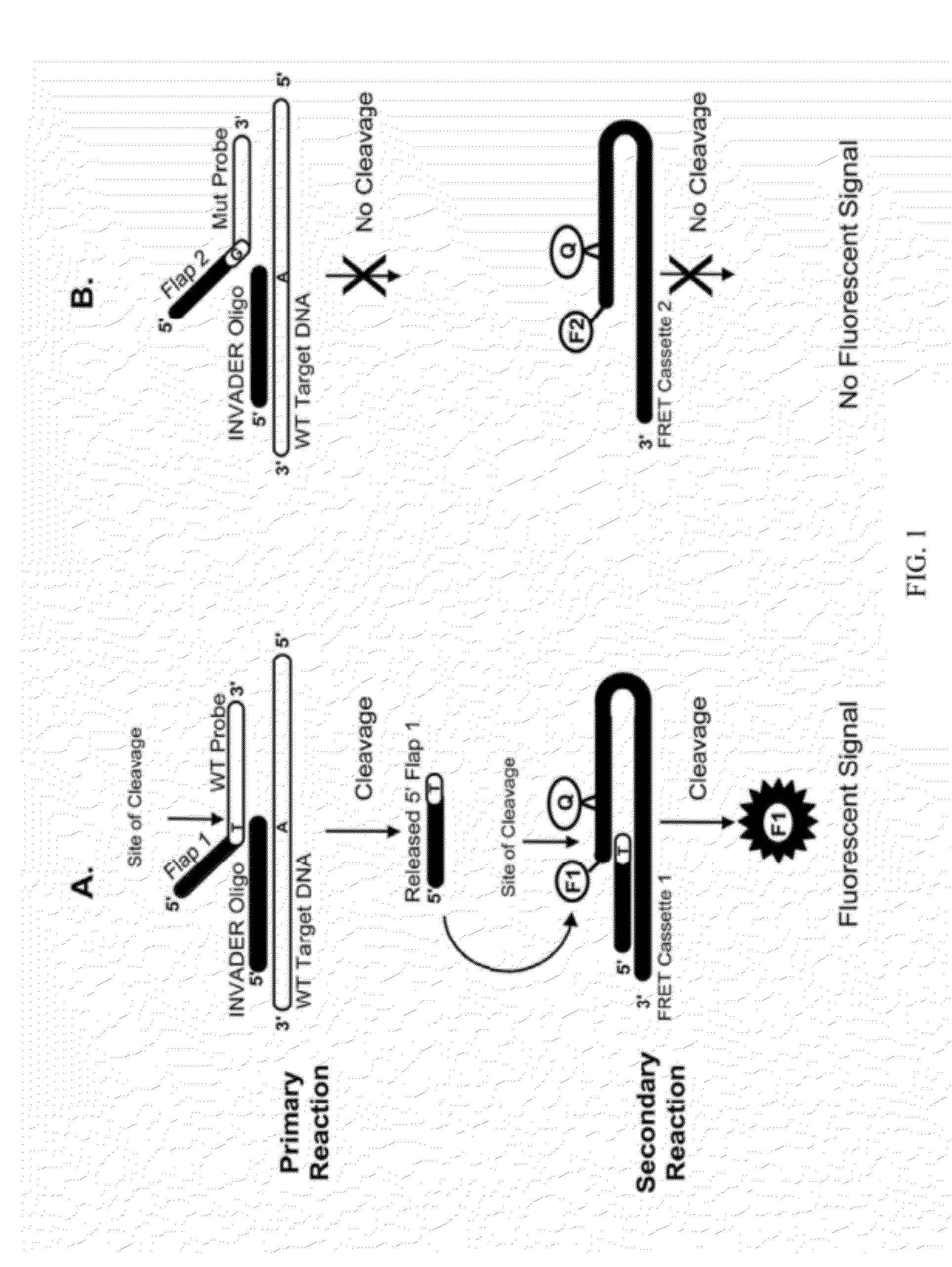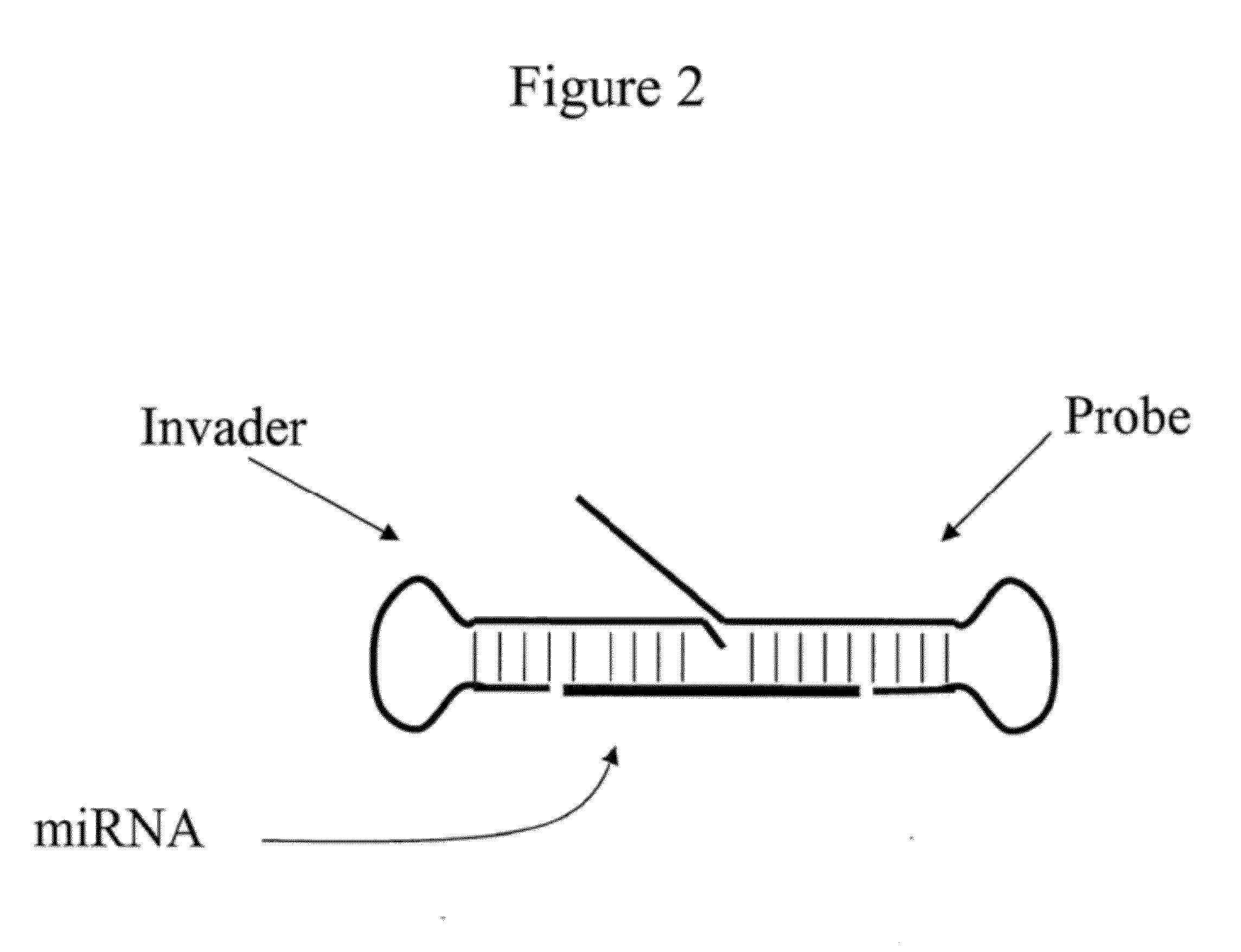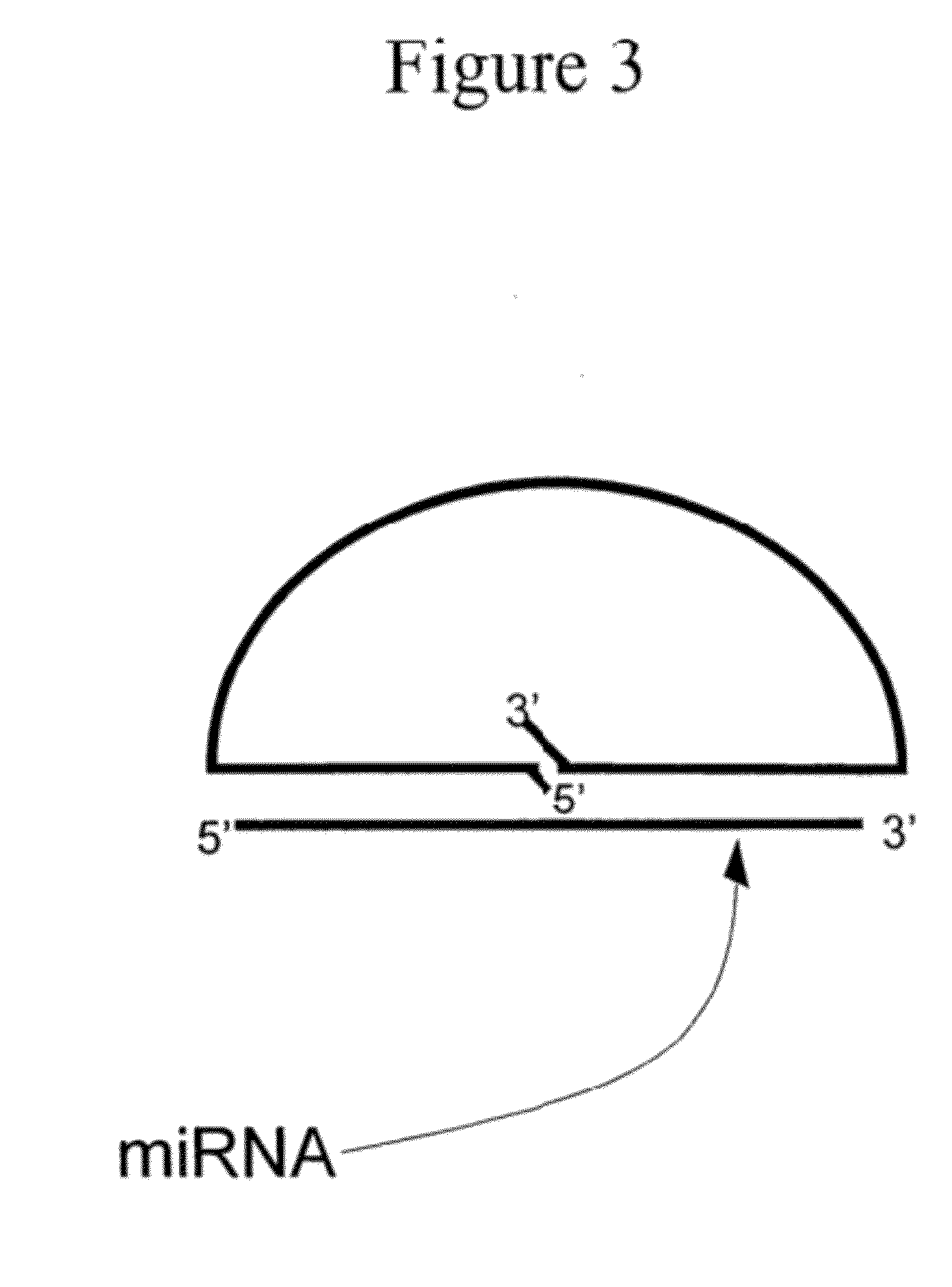Detection of Small Nucleic Acids
a technology of interfering rnas and detection methods, applied in the field of detection and characterization of interfering rnas, can solve the problems of lack of effective techniques for detection and quantification of mirna expression, low analytical sensitivity of northern blotting and chip hybridization methods,
- Summary
- Abstract
- Description
- Claims
- Application Information
AI Technical Summary
Benefits of technology
Problems solved by technology
Method used
Image
Examples
example 1
Materials and Methods
[0188]The following final concentrations (unless noted) were used for all reactions:[0189]Probe=1 μM[0190]INVADER=1 μM[0191]ARRESTOR=2.67 μM[0192]CLEAVASE XII enzyme=30 ng
[0193]All synthetic miRNA oligonucleotides were purchased from Dharmacon and gel purified on 20% denaturing acrylamide. Synthetic miRNAs were used to determine temperature optima (see below) and LOD.[0194]INVADER, probe, and ARRESTOR oligonucleotides were synthesized either by Integrated DNA Technologies (IDT) or Third Wave Technologies and purified on 20% denaturing acrylamide, unless otherwise indicated.[0195]The following 2.5× primary reaction buffer was used (unless otherwise noted) for all reactions:[0196]25 mM MOPS pH 7.5[0197]62.5 mM KCl[0198]0.125% Tween 20[0199]0.125% Nonidet NP40[0200]62.5 mM MgSO4 [0201]5% PEG[0202]Unless otherwise noted, all reactions were overlaid with 10 μl mineral oil prior to the first thermal incubation.[0203]Unless otherwise noted, synthetic miRNAs contained a...
example 2
[0204]Temperature Optimization Experiments for let-7 and mir-1
[0205]The oligonucleotide design for let-7 is shown in FIG. 5. The oligonucleotide design for mir-1 is shown in FIG. 5. The following primary mixes were made and incubated at 50° C.±10° C. in a 96 well plate for 30 minutes. In addition, a no target master mix was prepared (addition of H2O in place of RNA). All reactions were covered with mineral oil to prevent evaporation.
StockAmountPrimary Reaction ComponentsConcentrationAddedPrimary Reaction Buffer2.5X4 μlProbe oligonucleotide (SEQ ID NOs:10μM1 μl2, 6, or 9 for let 7; SEQ ID NOs:12, 16, or 19 for miR-1)INVADER oligonucleotide (SEQ10μM1 μlID NOs: 1, 5, or 8 for let 7;SEQ ID NOs: 11, 15, or 18 formiR-1)CLEAVASE IX or XII enzyme40 ng / μl CLEAVASE0.5 μl IX enzyme or60 ng / μl CLEAVASEXII enzymetRNA20ng / μl1.5 μl Synthetic miRNA (SEQ ID NO: 4 for100pM2 μllet-7a; SEQ ID NO: 14 for miR-1)Total10 μl
[0206]After completion of the primary reaction, 5 μl of the following secondary r...
example 3
[0208]LOD Experiments for let-7 and miR-1
[0209]After determining the optimal reaction temperature for each set of probe and INVADER oligonucleotides and determining the best working design (from the temperature optimization net signal), the following experiment was set up to determine the LOD of the design using synthetic RNA. The following reaction mix was aliquoted into a 96-well plate (see plate setup below) with each well containing:
ComponentStock conc.Amount AddedPrimary reaction buffer2.5X4 μlProbe10μM1 μlSEQ ID NO: 6 for let 7SEQ ID NO: 16 or 19 for miR-1INVADER oligo10μM1 μlSEQ ID NO: 5 for let 7SEQ ID NO: 15 or 18 for miR-1CLEAVASE XII enzyme60ng / μl0.5 μl TRNA20ng / μl1 μlTOTAL7.5 μl
[0210]2.5 μl of the following miRNA concentations were added in triplicates or quadruplicates using the following setup:
1 nM100 pM10 pM1 pM100 fM10 fMH2OABCD
[0211]The plate was overlayed with mineral oil (10 μl) and incubated at 50° C. for 2 hrs. After completion of the primary reaction, 5 μl o...
PUM
 Login to View More
Login to View More Abstract
Description
Claims
Application Information
 Login to View More
Login to View More - R&D
- Intellectual Property
- Life Sciences
- Materials
- Tech Scout
- Unparalleled Data Quality
- Higher Quality Content
- 60% Fewer Hallucinations
Browse by: Latest US Patents, China's latest patents, Technical Efficacy Thesaurus, Application Domain, Technology Topic, Popular Technical Reports.
© 2025 PatSnap. All rights reserved.Legal|Privacy policy|Modern Slavery Act Transparency Statement|Sitemap|About US| Contact US: help@patsnap.com



